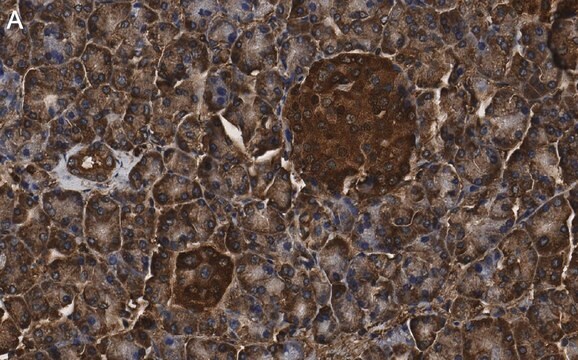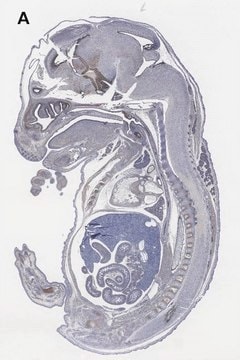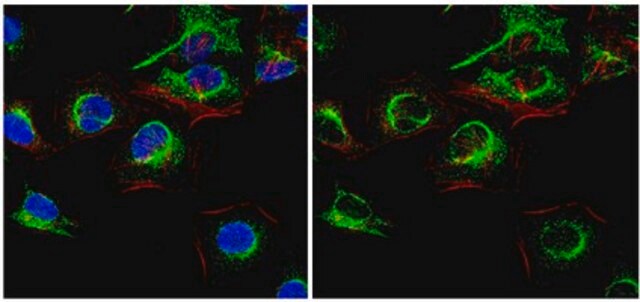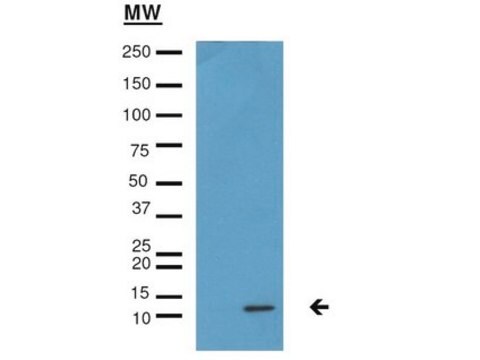MABF2160
Anti-MIC-A MIC-B Antibody, clone 6D4
clone 6D4, from mouse
Sinónimos:
MHC class I polypeptide-related sequence A/MHC class I polypeptide-related sequence B
About This Item
Productos recomendados
biological source
mouse
antibody form
purified immunoglobulin
antibody product type
primary antibodies
clone
6D4, monoclonal
species reactivity
human
packaging
antibody small pack of 25 μg
technique(s)
flow cytometry: suitable
immunohistochemistry: suitable (paraffin)
inhibition assay: suitable
isotype
IgG2aκ
NCBI accession no.
UniProt accession no.
target post-translational modification
unmodified
Gene Information
human ... MICA(100507436)
General description
Specificity
Immunogen
Application
Flow Cytometry Analysis: A representative lot detected MIC-A and MIC-B in Flow Cytometry applications (Groh, V., et. al. (1999). Proc Natl Acad Sci U S A. 96(12):6879-84).
Inhibits Activity/Function Analysis: A representative lot inhibited cytotoxicity of ovary tumor-derived T cells against various cancer cell lines. (Groh, V., et. al. (1999). Proc Natl Acad Sci U S A. 96(12):6879-84).
Inflammation & Immunology
Quality
Flow Cytometry Analysis: 1 µg of this antibody detected MIC-A MIC-B in one million HeLa cells.
Target description
Physical form
Storage and Stability
Other Notes
Disclaimer
¿No encuentra el producto adecuado?
Pruebe nuestro Herramienta de selección de productos.
Certificados de análisis (COA)
Busque Certificados de análisis (COA) introduciendo el número de lote del producto. Los números de lote se encuentran en la etiqueta del producto después de las palabras «Lot» o «Batch»
¿Ya tiene este producto?
Encuentre la documentación para los productos que ha comprado recientemente en la Biblioteca de documentos.
Nuestro equipo de científicos tiene experiencia en todas las áreas de investigación: Ciencias de la vida, Ciencia de los materiales, Síntesis química, Cromatografía, Analítica y muchas otras.
Póngase en contacto con el Servicio técnico








